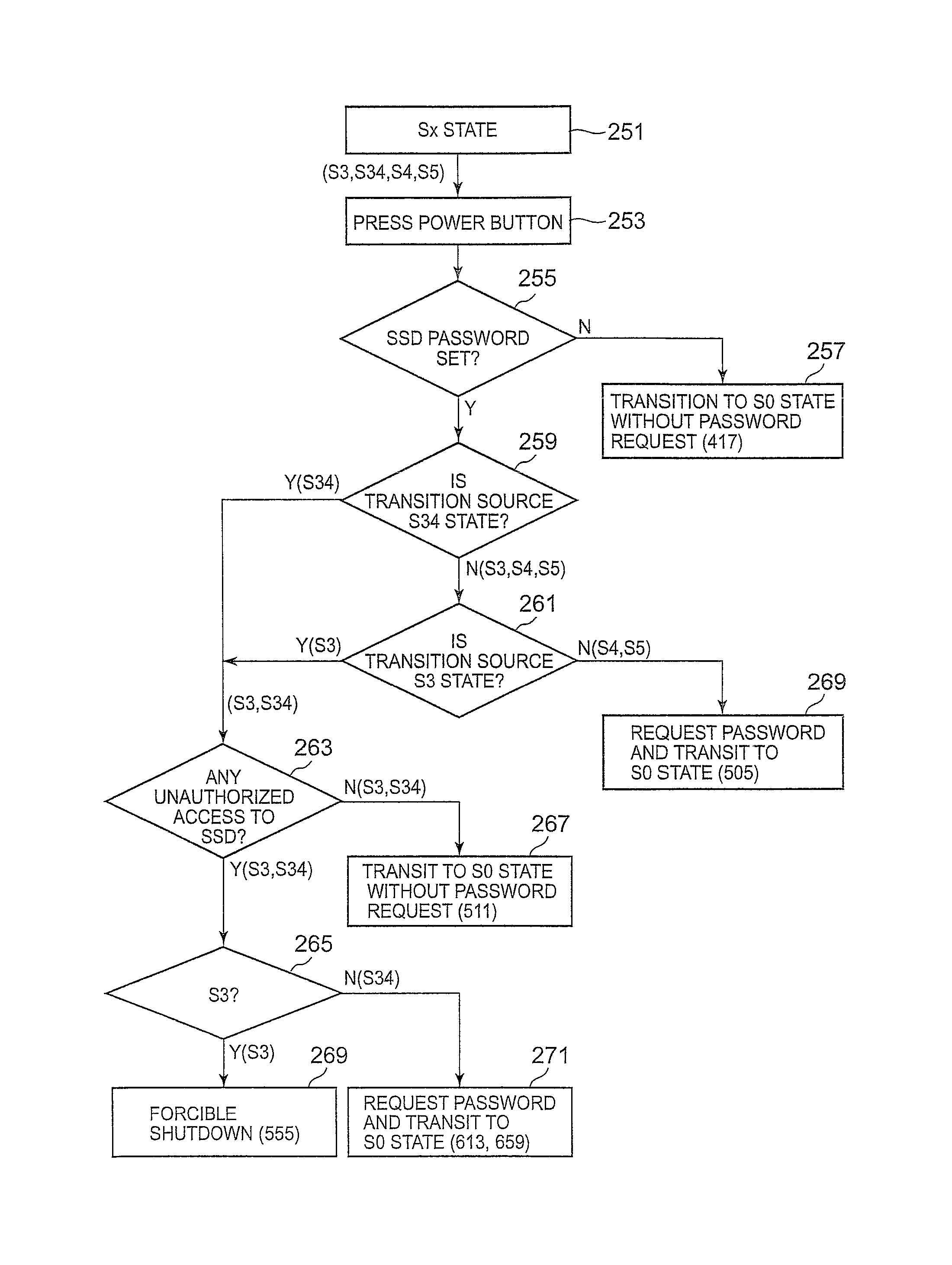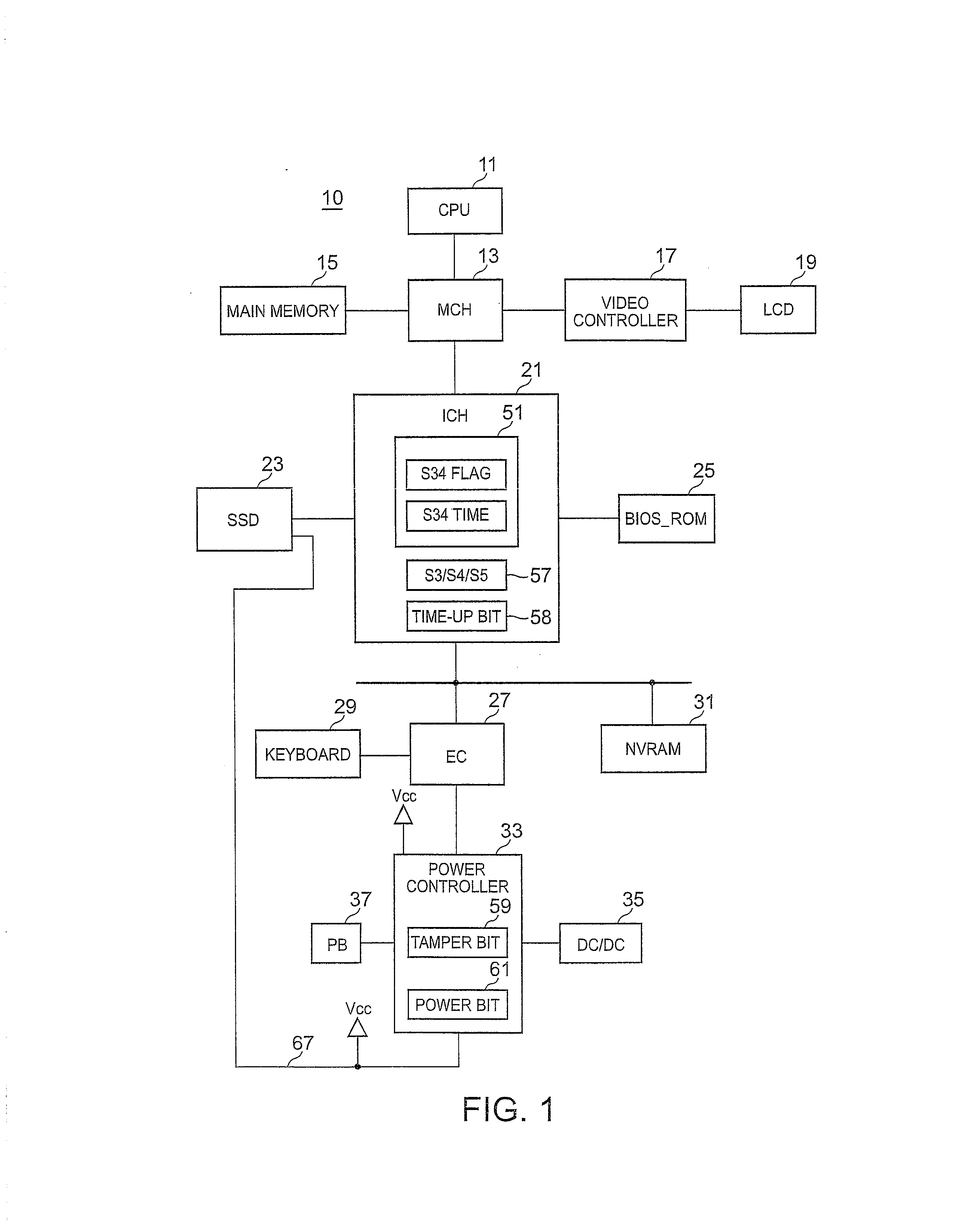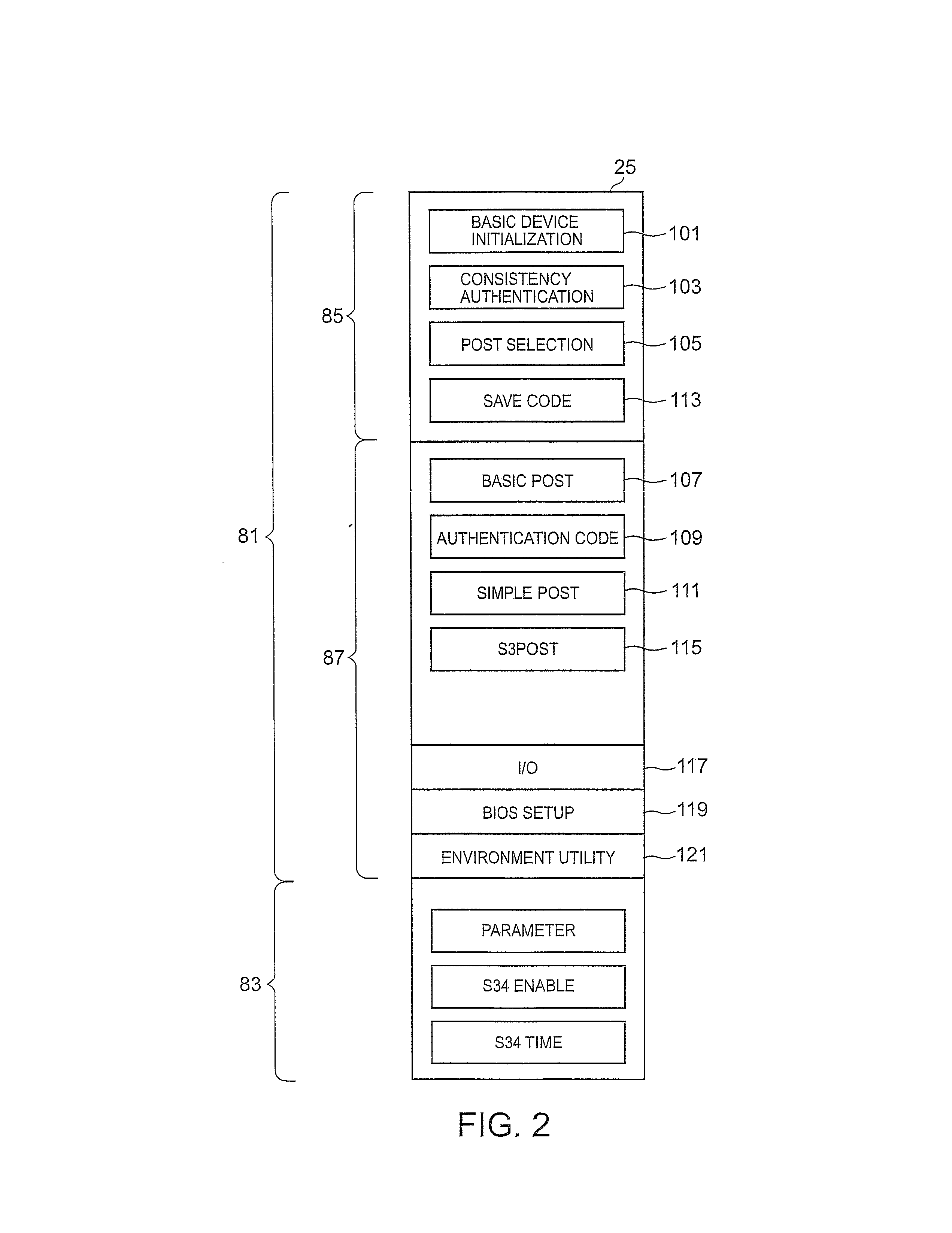Method and apparatus for protecting a password of a computer having a non-volatile memory
a non-volatile memory and password protection technology, applied in the field of electronic devices, can solve the problems of data not being able to be stolen from the disk drive, burdening the user and degrading operability, and not being able to request the user to input a password
- Summary
- Abstract
- Description
- Claims
- Application Information
AI Technical Summary
Benefits of technology
Problems solved by technology
Method used
Image
Examples
Embodiment Construction
[Power State]
[0029]FIG. 1 is a functional block diagram illustrating a hardware configuration of a notebook-type personal computer (Laptop PC) 10. Most of the hardware configuration is well-known and therefore the hardware configuration will be described within a range required for the present invention. A memory control hub (MCH) 13 is connected to a CPU 11, a main memory 15, a video controller 17, and an I / O control hub (ICH) 21. The video controller 17 is connected to an LCD 19.
[0030]The ICH 21 has interface functions for various standards. In FIG. 1, typically an SSD 23 is connected to a SATA, a BIOS_ROM 25 is connected to an SPI, and an embedded controller (EC) 27 and an NVRAM 31 are connected to an LPC. A keyboard 29 and a power controller 33 are connected to the EC 27. A power button 37 and a DC / DC converter 35 are connected to the power controller 33. The power controller 33 is connected to an SSD 23 via a tamper detection line 67.
[0031]The Laptop PC 10 corresponds to a powe...
PUM
 Login to View More
Login to View More Abstract
Description
Claims
Application Information
 Login to View More
Login to View More - R&D
- Intellectual Property
- Life Sciences
- Materials
- Tech Scout
- Unparalleled Data Quality
- Higher Quality Content
- 60% Fewer Hallucinations
Browse by: Latest US Patents, China's latest patents, Technical Efficacy Thesaurus, Application Domain, Technology Topic, Popular Technical Reports.
© 2025 PatSnap. All rights reserved.Legal|Privacy policy|Modern Slavery Act Transparency Statement|Sitemap|About US| Contact US: help@patsnap.com



